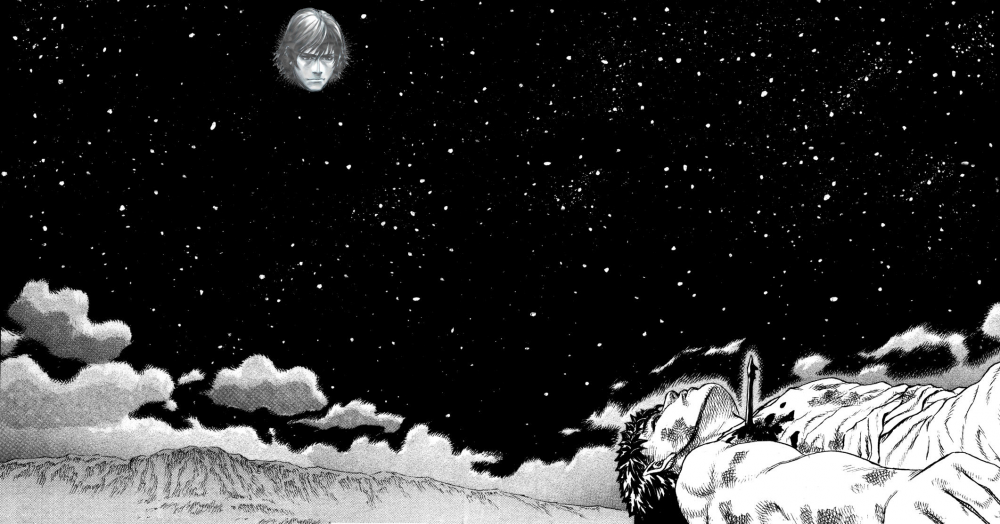RATING SYSTEMS
My reviews use two rating systems, with the intent to 1) distinguish my personal appreciation of a work of media from my “objective” appreciation of it, and 2) form an accurate summary of my feelings towards the work in question.
1. SUBJECTIVE STAR RATING SYSTEM (SSRS)
The subjective star rating system consists of two ratings on a 5-star gradient; one is my personal appreciation (the Personal Rating), whereas the other estimates how much I would recommend the work to other people (the Recommendation Rating). This allows me to effectively distinguish works that I like very much, but would not enthusiastically recommend (whether it is an acquired taste or simply not essential in the context of a genre or an artist’s catalogue), as well as works that I don’t like, but that I feel others would appreciate more.
Personal Rating:
*****: Masterpiece. An all-time favorite.
****½: Great. Profoundly captivating, and a pleasure every time.
****: Very Good. Nothing life-changing, but merits coming back to it.
***½: Good. Worth keeping in spite of certain notable flaws.
***: Solid. Competent, but not much more than respectable in its execution.
**½: Average. Shows major signs of misfire, but has a few redeeming qualities.
**: Mediocre. It isn’t devoid of interest, but good points are few and far between.
*½: Bad. Offers a thoroughly unsatisfying experience.
*: Awful. Incites not only boredom, but active displeasure.
½: Worthless. I would much rather avoid it.
[0 stars]: Something that inexplicably offers nothing redeemable or interesting to my sensibilities.
Recommendation Rating:
*****: A must-own; your collection is worth little without it.
****½: A highly essential release. If you can get it, get it now.
****: Most definitely worth purchasing. If you want it, buy it soon.
***½: Nothing essential, but still recommended. If you want it, buy it eventually.
***: People who are into that kind of media could like it, but not necessarily others.
**½: Only for fans. Even then, think a bit before getting it.
**: Only for major fans.
*½: Only for completists.
*: Only for hardcore completists.
½: Even its value to a collector or completist is questionable.
[0 stars]: No one should get it.
2. LETTERED RATING SYSTEM (LRS)
This rating system aims to represent my “objective” opinion of a work. In other words, it depends not just on my own appreciation of it, but also on other, more objective factors, such as its originality or its importance in the context of a genre or an artist’s catalogue. This rating system has more positive ratings than negative ratings, as I deem it more useful to further distinguish good works from one another as opposed to bad ones.
GOD TIER RANKS
A+: The greatest work ever made in its particular medium. 11/10.
Omega: Virtually perfect. High 10/10.
Lambda: A definitive masterpiece. Legendary. Solid 10/10.
Epsilon: A near-masterpiece, and overall essential. High 9/10 to Low 10/10.
ELITE TIER RANKS
Delta: Great. An “average masterpiece”. Solid 9/10.
Gamma: More than very good. Almost a “minor classic”. High 8/10 to Low 9/10.
Beta: Very good. Nothing ground-breaking, but very competent. Solid 8/10.
UPPER MID-TIER RANKS
Alpha: More than good. Imperfect, but worthy of attention. High 7/10 to Low 8/10.
A: Good. It’s no classic, but it has quite a bit to offer. Solid 7/10.
A-: Pretty good. There is something to it, even if it’s not fully exploited. Low 7/10.
B+: Somewhat good. Second-rate, but with signs of something more. High 6/10.
B: Solid. Its flaws don’t quite spoil the experience. Solid 6/10.
B-: Less than solid. Low 6/10.
LOWER MID-TIER RANKS
C+: Above average. High 5/10.
C: Purely average. Neither the good or bad aspects outweigh each other. Solid 5/10.
C-: Below average. Low 5/10.
D+: Mediocre. A few redeeming aspects barely salvage it. 4/10.
BOTTOM TIER RANKS
D: Bad. Offers a thoroughly uninteresting experience. 3/10.
E: Awful. The experience it offers is not only unsatisfying, but outright aggravating to the ears and to the mind. 2/10.
F: Almost worthless. It offers so little that it’s better to forget about it. 1/10.
ZERO: A release that somehow outright refuses to be appraised or appreciated, and thus is completely worthless on a consumer or analysis standpoint. 0/10.
TRACK COLORS
Album reviews, in particular, feature a track listing. So as to immediately differentiate the high points from the low points, songs may be written in different colors, in the same fashion as early Internet-era music critic George Starostin.
Songs written in red are highlights.
Songs written normally are not particularly good or bad in comparison to the rest of the material.
Songs written in blue are lowlights.
